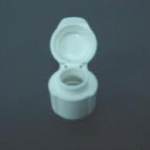Blind patients have the same dental needs as those with sight. However, special precautions should be taken to ensure the comfort and safety of the patient and staff. More verbal explanations are required when assisting a blind dental patient. These patients use other senses, such as hearing and touch, to be able to navigate their way through the world and knowing what is going on.
Prior to the dental visit : Caretaker’s role

Talk to your dentist to know what to expect
Try to locate a dental professional who has experience with individuals who are blind. If you are in need of a referral, call California Deaf-Blind Services (CDBS) at 1-800-822-7884; a CDBS Family Specialist may be able to link you with someone in your area who has information regarding local providers.
Call the dental office staff in advance of your visit to let them know what to expect (e.g., difficulty waiting, unusual and/or loud vocalizations, challenging behaviors, etc.).
If the family and dental staff can manage this, give the individual who is blind an opportunity to visit the dental office in advance of the appointment so that he/she can become familiar with the provider, office staff, equipment, smells and sounds, etc. Identify name cues or signs for some of the key people who will be providing the dental services. This pre-appointment visit provides an opportunity to collect sample instruments to use in role-play activities (see next recommendation).
Provide opportunities for role-play activities prior to the dental visit. When appropriate, give the individual who is blind the chance to be the provider and use the sample equipment on others (i.e., family members, teachers, classmates, etc.). Allow opportunities for the individual’s peers to do the same with the individual who is blind. Make the experience fun and relaxed, and use this role-play activity to reinforce language that will be used during the dental visit.
Bring something for the person to do during periods of waiting at the office.
If the individual has a favorite object and can hold or touch it during the procedure, bring it to the appointment. It may provide the patient with a level of comfort/security that will help him/her through the procedure.
Bring the person’s medical records to decrease the repetition of developmental history, waiting for records to be sent, and duplication of unnecessary exams. Include addresses and phone numbers of all service providers.
Bring information about the person’s specific medical issues if the dental professionals are new or unfamiliar with the particular syndrome or condition (e.g., Congenital Rubella Syndrome, CHARGE Syndrome, etc.).
Care in the dental office : Dental team’s role
Use the patients’ names when speaking to them. Unlike patients who have their sight, blind patients have no way of knowing that you are speaking to them unless you use their name.
Offer to guide the patients from one location to another–for example, from the waiting room to the exam room. Not all patients will want assistance. Exude patience with all patients, especially those that choose not to utilize your guidance to get where they need to be.
Tell the patients exactly what procedures will be completed. Describe to them what the procedures will feel like. Wait a few moments after telling the patients about the procedures, in case they have questions. They may require a few extra moments to process the procedure that you described.
Give very clear, concise directions to the patients. Tell them exactly what you want them to do. Don’t forget to tell them why you want them to do something. Patients rely on you to explain why actions are necessary.
Let the person know how the exam is proceeding. Tell the person what will happen next and what the reasons are for the particular examinations.
Model and reward cooperative behavior, appropriate waiting, confidence, acceptance and relaxed body posture.
Oral care at home
A schedule can help blind patients remember when to engage in oral care. Dental care times could be set for after each meal or every morning and night.
If blind patients keep one hand firmly on the faucet, they can avoid hitting the faucet when disposing of mouthwash.
Patients with limited vision can store oral care supplies on a washcloth of a contrasting color.
To prevent losing the toothpaste cap when brushing, blind patients can tuck the cap into their pocket or hold it in their free hand. Using a toothpaste tube with a hinged cap also helps to keep track of the cap.
Blind patients can hold the toothbrush head firmly between their thumb and index finger to distribute toothpaste. Toothpaste can be squeezed directly onto the toothbrush, into the palm of the hand or into a medicine cup.

